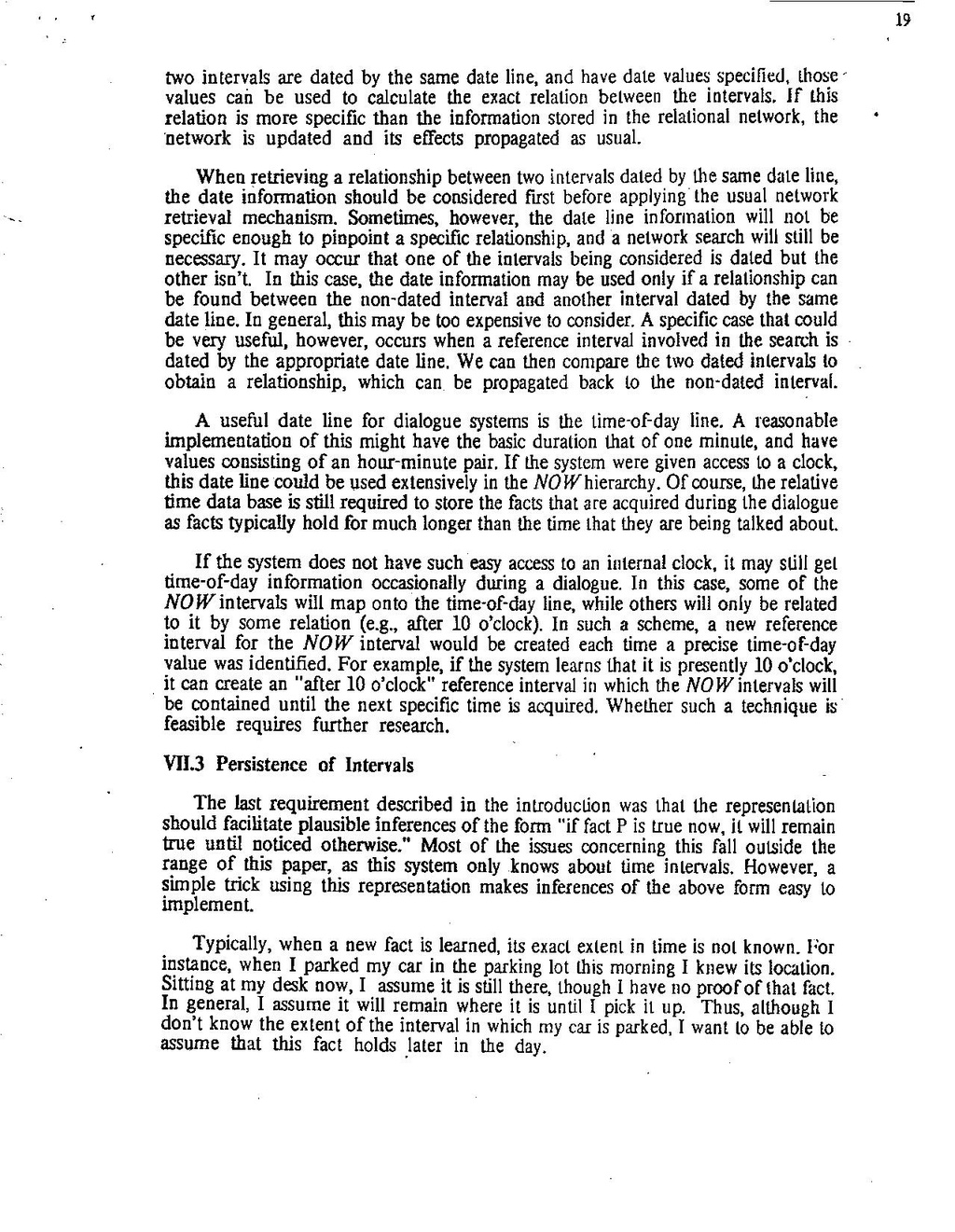two intervals are dated by the same date line, and have dale values specified, those values can be used to calculate the exact relation belween the intervals. If this relation is more specific than the information stored in the relational network, the network is updated and its effects propagated as usual.
When retrieving a relationship between two intervals dated by the same dale line, the date information should be considered first before applying the usual network retrieval mechanism. Sometimes, however, the dale line in forination will not be specific enough to pinpoint a specific relationship, and a nelwork search will still be necessary. It may occur that one of the intervals being considered is dated but the other isn't. In this case, the date information may be used only if a relationship can be found between the non-dated interval and another interval dated by the same date line. In general, this may be too expensive to consider. A specific case that could be very usefUL, however, occurs when a reference interval involved in the search is dated by the appropriate date line. We can then compare the two dated intervals to obtain a relationship, which can be propagated back to the non-dated interval.
A usefUL date line for dialogue systems is the lime-of-day line. A reasonable implementation of this might have the basic duration that of one minute, and have values consisting of an hour-minute pair. If the system were given access to a clock, this date line could be used extensively in the NOW hierarchy. Of course, the relative time data base is still required to store the facts that are acquired during the dialogue as facts typically hold for much longer than the time that they are being talked about.
If the system does not have such easy access to an internal clock, it may still get time-of-day information occasionally during a dialogue. In this case, some of the NOW intervals will map onto the time-of-day line, while others will only be related to it by some relation (e.g., after 10 o'clock). In such a scheme, a new reference interval for the NOW interval would be created each time a precise time-of-day value was identified. For example, if the system learns that it is presently 10 o'clock, it can create an "after 10 o'clock" reference interval in which the NOW intervals will be contained until the next specific time is acquired. Whether such a technique is feasible requires further research.
VII.3 Persistence of Intervals
The last requirement described in the introduction was that the representation should facilitate plausible inferences of the form "if fact P is true now, it will remain true until noticed otherwise." Most of the issues concerning this fall outside the range of this paper, as this system only knows about time intervals. However, a simple trick using this representation makes inferences of the above form easy to implement
Typically, when a new fact is learned, its exacl extent in time is not known. For instance, when I parked my car in the parking lot this morning I knew its location. Sitting at my desk now, I assume it is still there, though I have no proof of that fact. In general, I assume it will remain where it is until I pick it up. Thus, although I don't know the extent of the interval in which my car is parked, I want lo be able to assume that this fact holds later in the day.
